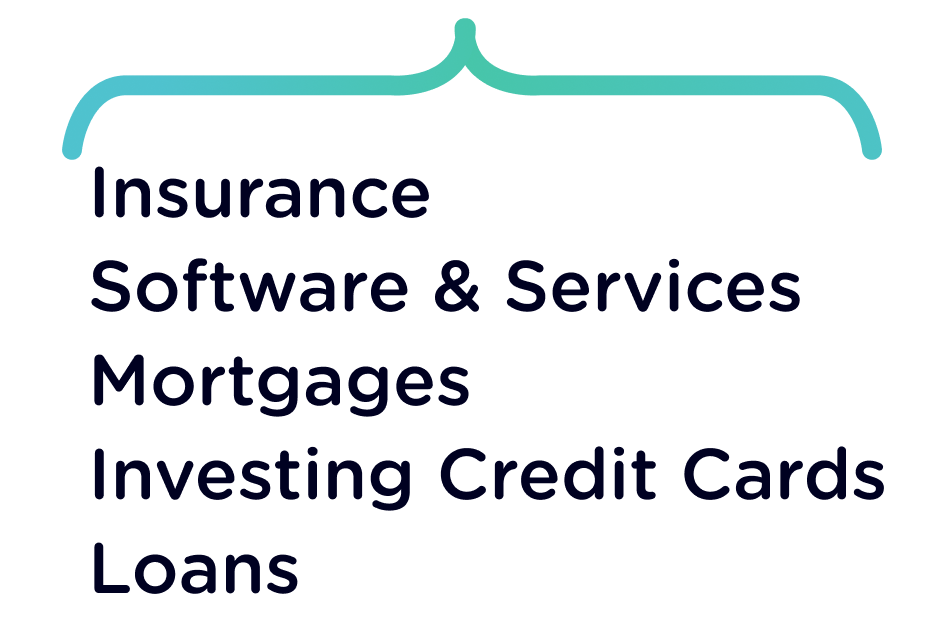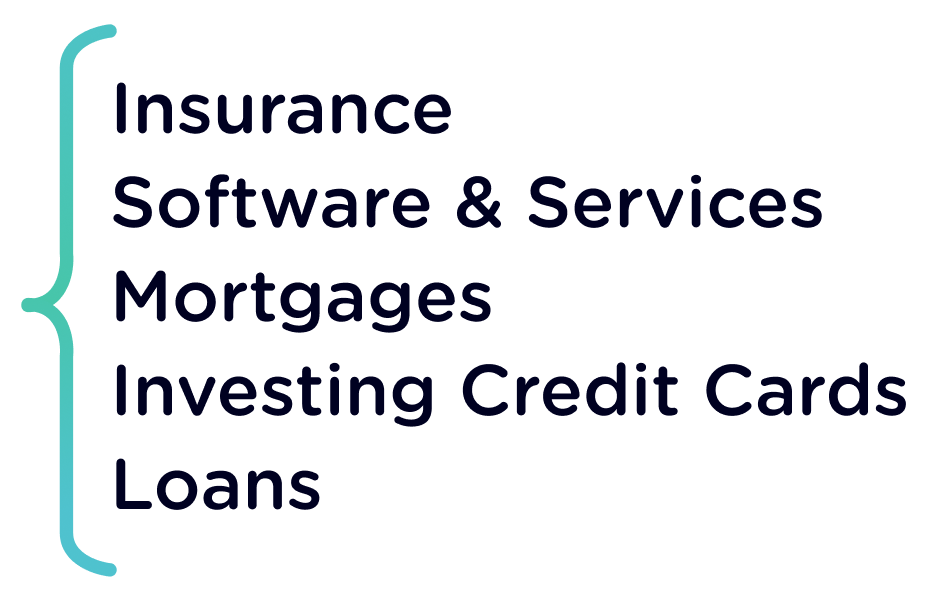GIC rates have generally been increasing as the prime rate in Canada increases. So, if you want a low-risk investment with guaranteed returns, a GIC is a popular option to look into.
Here we have the best GIC rates in Canada, along with the different types of GICs available, and the pros and cons of this investment option. Let’s get started.
Key Takeaways
- TD offers the best GIC products in Canada.
- Currently, the highest GIC rates come from WealthONE and EQ Bank.
- An institution's rates are determined by the type of GIC, its features, and the BOC's overnight rate.
- Online banks typically offer better GIC rates than older, bigger banks.
Best GICs in Canada 2025 winner: TD GICs
Our pick for the best GICs in Canada for 2025 are TD GICs. TD offers several easy-to-use GICs with decent (non-redeemable) rates ranging from 2.7% to 3.25%, depending on your term commitment. Its investment platform makes it simple to set up a GIC ladder, too.
If you want a safe way to grow your money, check out TD’s cashable and non-cashable GIC options.
Methodology
To evaluate GICs, we analyze over 10 data points to generate a trustworthy Genius Rating. We consider all aspects of a GIC, including rates, term lengths, minimum investment, penalties for cashing early, customer satisfaction, and availability, to assess its overall value. Then, the GIC’s features are rated based on how they stack up against other available options.
Highest GIC interest rates
- 3.65% for 1 year from WealthONE
- 3.75% for 2 years from WealthONE and Oaken Financial
- 3.7% for 3 years from WealthONE
- 3.7% for 4 years from WealthONE
- 3.85% for 5 years from WealthONE
Best GICs in Canada
Below is a list of non-redeemable, long-term, non-registered GICs at the top online and big banks in Canada.
| Bank | 1-year rate | 2-year rate | 3 year | 4-year rate | 5-year rate | Minimum investment | Learn more |
|---|---|---|---|---|---|---|---|
| TD | 2.7% | 2.75% | 2.9% | 3% | 3.25% | $500 | Learn more |
| Tangerine | 3% | 3.05% | 3.45% | 3.25% | 3.35% | $1 | Learn more |
| WealthONE | 3.65% | 3.75% | 3.7% | 3.7% | 3.85% | $1,000 | Learn more |
| Motive Financial | 3% | 3.1% | 3.35% | 3.5% | 3.7% | $1,000 | Learn more |
| Oaken Financial | 3.5% | 3.7% | 3.6% | 3.6% | 3.8% | $1,000 | Learn more |
| EQ Bank | 3% | 3.15% | 3.3% | 3.4% | 3.45% | $100 | Learn more |
| Laurentian Bank | 3.05% | 3.35% | 3.4% | 3.45% | 3.5% | $500 | Learn more |
| Hubert Financial | 3.6% | 3.55% | 3.45% | 3.45% | 3.45% | $1,000 | Learn more |
| Outlook Financial | 3.5% | 3.45% | 3.35% | 3.45% | 3.5% | $1,000 | Learn more |
| People's Trust | 3.3% | 3.5% | 3.45% | 3.35% | 3.4% | $1,000 | Learn more |
| BMO | 2.25% | 2.4% | 2.55% | 2.7% | 3% | $1,000 | Learn more |
| Manulife | 2.9% | 3% | 3.5% | 3.05% | 3.5% | $2,500 | Learn more |
| Scotiabank | 2.5% | 2.75% | 2.6% | 2.7% | 2.8% | $500 | Learn more |
| CIBC | 2.25% | 2.2% | 2.25% | 2.3% | 2.35% | $1,000 | Learn more |
| RBC | 2.45% | 2.55% | 2.55% | 2.7% | 2.75% | $1,000 | Learn more |
| National Bank | 3.25% | 3.45% | 3.6% | 3.75% | 3.99% | $500,000 | Learn more |
All GIC rates are accurate as of June 19, 2025. We'll do our best to keep them updated, but please visit each bank's individual website for the most up-to-date information.
What is a GIC?
A GIC is a Guaranteed Investment Certificate. This is a low-risk, low-reward type of investment where you deposit money and earn a certain interest rate (usually guaranteed at the time of deposit).
GICs are ideal for preserving your principal while earning steady returns. GICs can usually get you better rates than a high-interest savings account. They’re usually insured by the CDIC or by a form of provincial deposit insurance (in the case of certain credit unions and their subsidiaries).
This table provides an overview of the various types of GICs:
| Type | Details |
|---|---|
| Fixed rate GIC | * Rate is specified at the beginning of the term and guaranteed throughout |
| Variable rate GIC | * Interest rate changes throughout the course of the term * Rate is usually linked to the prime rate |
| Registered GIC | * Can be held in a registered savings account |
| Non-registered GIC | * Incurs taxes |
| Redeemable/cashable GIC | * Access your money any time * No penalties |
| Non-redeemable/non-cashable GIC | * No access to the money until end of the term |
| Short-term GIC | * Term length is less than 1 year |
| Long-term GIC | * Term length is between 1 and 10 years |
| Market-linked/equity-linked GIC | * Linked to the stock market |
| U.S. dollar/foreign currency GIC | * Earns interest in a currency other than CAD |
Some GICs offer fixed rates, while others are linked to market performance, but your initial investment is always secure, so they’re popular for short-term savings goals or risk-averse investors.
Before depositing your funds, you choose from a list of term lengths, and your money stays in a GIC account for the specified amount of time.
What's the difference between GICs and term deposits?
The main difference between the GICs and term deposits is their term lengths. Usually, term deposits have shorter terms than GICs do.
Still, some institutions use the term "term deposits" to refer to both long-term GICs (one year or more) and shorter-term investments held for less than a year. Other institutions may use the terms interchangeably.
Either way, they're both secured investments, so your initial investment amount is always returned to you at the end of the term.
How are GIC rates in Canada calculated?
The interest rates attached to an institution's GICs are based on that same institution's prime rate, and this, in turn, is based on the Bank of Canada's overnight rate. This BOC rate is reviewed and often changed every few months, and GIC rates will typically change shortly thereafter.
A GIC's rate also depends a bit on its features. For example, GICs with longer terms will typically come with higher interest rates than those with shorter terms. Ease of access plays a part here, too, as non-redeemable GICs have higher rates than their redeemable counterparts.
What is a GIC account?
A GIC account is where your purchased GICs are held and tracked. You can hold GICs in a registered, non-registered, tax-free savings, or RESP account.
Your GIC account is a secure account managed by your financial institution where you can view the terms, interest rates, and maturity dates of your GIC investments. In some accounts, you can manage multiple GICs or set them up to automatically reinvest at the end of a term.
Unlike savings accounts, funds in a GIC account are locked in and not accessible until the maturity date.
Why you should consider investing in GICs
If you want steady, low-risk growth, then GICs are a dependable choice, especially for creating a secure savings stash or planning for retirement.
GICs offer a double whammy: flexibility plus guaranteed returns.
You can choose from a variety of term lengths to align with your savings goals. Risk-averse investors love GICS because, even if markets fluctuate, you’re guaranteed to grow your money and earn more than your initial deposit.
How to choose the right GIC for you: A step-by-step guide
New to GICs? Here’s how to pick one.
1. Define your goal (long-term or short-term)
Identifying and fine-tuning your goals will help determine whether long-term or short-term GICs are better. Take time to consider your risk tolerance and how you want to balance your overall investment portfolio.
2. Decide how accessible you need your funds
If having funds inaccessible for a long time is something that bothers you, you'll want a shorter-term, cashable GIC. But if you're okay with locking funds in for a while longer, other types of GICs can be more valuable.
3. Compare interest rates and institutions
Interest rates change fairly regularly, but certain institutions can be counted on to have better rates than others. Choose an institution you're comfortable with, of course, but also one with consistently good rates.
4. Choose between registered vs. non-registered
GICs can be held in registered or non-registered accounts, meaning you can choose whether to defer paying taxes until you withdraw the funds. Non-registered accounts offer easier access to the funds, but you'll pay regular taxes.
5. Consider laddering
As explained further below, GIC laddering allows you to split your money across several different GICs of various term lengths. This way, you can take advantage of high rates without sinking all your money into a longer term than you'd normally be comfortable with.
6. Check for deposit insurance
Only invest with an institution that you know has CDIC coverage or is secured through credit union deposit insurance. This way, your funds are safe even if the bank you've invested with suddenly goes out of business.
The pros and cons of a GIC
Like everything, there are good and bad sides to GICs. The following table briefly outlines the pros and cons of these investment options:
| Pros | Cons |
|---|---|
|
|
Difference between GICs and other investment options
A GIC is only one investment option out of many, so how does it compare?
GIC vs. high-interest savings account
A GIC and high-interest savings account (HISA) are pretty similar in that they're low-risk, low-reward investment options.
The difference is that most GICs have a set rate and a set term. HISAs, on the other hand, have an interest rate that can change at any time, plus you're able to withdraw money whenever you want.
GIC rates tend to be slightly higher than the HISA option at the same bank, so if you don't think you'll need that money for a while, it may be worthwhile to skip the HISA and go for the GIC.
GIC vs. mutual funds
Mutual funds are a collection of investments that are usually professionally managed. They are much higher risk than a GIC and have the potential for much higher rewards. Your money is linked to the stock market, where your stocks and bonds are. If the stock market crashes, you may lose all your money.
Whereas with GICs, you usually have a guaranteed return, and your initial investment is guaranteed as well.
GIC vs. bond
The main difference here is that a government bond is guaranteed by the government, vs. a GIC's bank guarantee.
But you're also able to sell your government bonds if the need arises, which can be convenient but does come with risks since market rates can fluctuate significantly. Non-redeemable GICs, on the other hand, are much more restrictive but more predictable since you're avoiding the possibility of a poor market.
A bond vs. GIC rates comparison, then, is hard to figure out because GIC rates are set, and bond rates fluctuate.
GIC vs. TFSA
A GIC is a type of investment that can be held within your Tax Free Savings Account (TFSA), meaning your investment is registered and you won't have to pay taxes on any interest earned.
But a TFSA can also be a separate investment all on its own, too.
Really, the biggest difference between these two is that TFSAs come with fewer restrictions. You can invest in a variety of assets with a TFSA, including stocks, bonds, mutual funds, and even GICs, whereas a GIC alone is just a cash investment.
TFSAs also offer more room for contributions and can be cashed out at any time, whereas non-redeemable GICs don't allow withdrawals until maturity.
GIC vs. RRSP
Just like a TFSA can be an individual investment vehicle and a place to hold a GIC, a Registered Retirement Savings Plan (RRSP) can work both ways, too.
Yes, there are restrictions on when and how much you can withdraw from your RRSP, but these are hard to compare to GIC restrictions. And RRSPs are usually added to on a fairly regular basis, whereas a GIC requires a one-time payment to fund it.
While there's almost always a minimum amount required for a GIC, RRSPs have annual maximum contribution limits instead of minimums.
How long should I lock in a GIC?
It depends on your growth goals and when you’ll need to access the money in the future.
Lock in a GIC with a shorter term if you’ll need the money soon. Lock in a GIC with a longer term if you’re looking for the highest return and you won’t need early access.
- Short-term (1 year or less): Offers flexibility, ideal if you need funds soon or expect rates to rise
- Medium-term (2-3 years): Balances accessibility with higher interest, suitable for moderate savings goals
- Long-term (4+ years): Provides the highest rates, best for people who can commit funds long-term without needing early access
GIC laddering strategy
GIC laddering is a strategy where you split your money across multiple GICs with different term lengths.
Instead of locking all your cash into one long-term GIC, you spread it across, say, 1-year, 2-year, 3-year, 4-year, and 5-year GICs. Each year, one GIC matures, and you can reinvest it in a new 5-year GIC at the current interest rate.
This investment strategy offers better liquidity than sinking all your funds into one single-term GIC. It allows you to take advantage of potentially higher rates over time while still earning more than a short-term GIC would pay.
Are GIC rates going up?
GIC rates are decreasing slightly due to the Bank of Canada's rate cuts over the last year or so.
Why? GICs are linked to the prime rate. This allows investors to earn returns that are somewhat aligned with inflation. There's less pressure for banks to attract investors when the prime rate dips.
If you've already locked in a good rate on a fixed-rate GIC, that rate will not change. Variable-rate and market-linked GICs do change.
The 3 best GICs in Canada
Though getting the best GIC rates in Canada offers great satisfaction and reward, there are several other factors to consider when buying a GIC, such as how easy it is to buy and whether or not you trust the bank offering it. After careful consideration, below are the top overall GICs in Canada.
To evaluate GICs, we analyze over 10 data points to generate a trustworthy Genius Rating. We consider all aspects of a GIC, including rates, term lengths, minimum investment, penalties for cashing early, customer satisfaction, and availability, to assess its overall value. Then, the GIC’s features are rated based on how they stack up against other available options.
TD GICs are an easy way to earn a modest guaranteed investment on some of your money. Like most banks in Canada, TD offers several types of Guaranteed Investment Certificates (GICs) to give their clients low-risk alternatives to more traditional stock market investing.
- Cashable GICs give you liquidity in your investments
- Offers market linked GICs for higher return potential
- Relatively low minimum investments on most GICs
- Can be part of a registered account
- Non-redeemable GICs tie up your money
- Special offer on 100-day term cashable GICs
- Unique TD International Student GIC option
Tangerine GICs provide consistently competitive rates. When coupled with the fact that they have no minimum investment amount, this makes this a legitimate investment option for small budgets or nervous investors.
- No minimum investment requirement
Investing with an RBC GIC is an easy way to get guaranteed return on the money you want to put aside. Though the return tends to be quite low, they’re still a decent way to make your money work for you – thanks to the low risk involved. RBC offers Canadians GICs backed by a well-known big bank, plus has industry-standard minimum investments of $1,000 for most options.
- Plenty of cashable GIC options
- Some non-redeemable GICs with slightly higher rates
- Relatively low minimum investments
- Several different market linked GICs for higher potential return
- Available with registered accounts
- Only a handful of non-redeemable GIC types available
- Special offers on cashable and non-cashable rates
- Convenient GIC-laddering tool available
Editorial Disclaimer: The content here reflects the author's opinion alone, and is not endorsed or sponsored by a bank, credit card issuer, rewards program or other entity. For complete and updated product information please visit the product issuer's website.
FAQ
What is a GIC in Canada?
GICs (Guaranteed Investment Certificates) are investment certificates issued by banks and financial institutions that come with a certain interest rate and a specific term. At the end of the term, you get your initial deposit back, plus interest.
What kind of banks offer GICs in Canada?
Nearly all Canadian banks offer GICs, including big names like Scotiabank and BMO, online banks, and small credit unions. You'll find a list of banks and financial institutions above, along with their posted GIC rates.
What Is A Certificate Of Deposit?
A certificate of deposit (CD) is an American investment vehicle that's similar to a GIC in Canada. It's a savings certificate with a fixed maturity date and interest rate, which makes it an appealing, low-risk option for short-term investors.
Where can I find the best GIC rates in Canada?
More often than not, online banks have better GIC rates than the big banks. Institutions like People's Trust, WealthOne, and Motive Financial frequently offer the best rates available, while places like RBC and TD trail pretty far behind.
Is 5% good for a GIC?
Yes, 5% is an excellent rate for a GIC, no matter the term length. Rates aren't that high right now, though – the closest you'll get is 4% for a 5-year term or 3.75% for a 3-year term with WealthONE.
What is a GIC ladder?
A GIC ladder is an investment approach where you invest money in GICs of varying term lengths. Then, when one term ends, you reinvest your returns into another longer-term GIC. This process is repeated indefinitely.
What are the best 3-year GIC rates Canada?
WealthONE offers the best 3-year rate, currently coming in at 3.75%. Oaken Financial (3.6%), EQ Bank (3.3%), People’s Trust (3.55%), Tangerine (3.45%) have the next best rates at the moment.
Explore more investment products
Learn more about Canada's top investment products by visiting our top-rated reviews below:
Scotiabank TFSA
Kraken
 $75 GeniusCash + Invest and trade in more than 350 cryptocurrencies + Low trading fees.
$75 GeniusCash + Invest and trade in more than 350 cryptocurrencies + Low trading fees.Moomoo Financial
 $65 GeniusCash + Get up to $2,200 in trading perks + Extended trading hours.
$65 GeniusCash + Get up to $2,200 in trading perks + Extended trading hours.






























